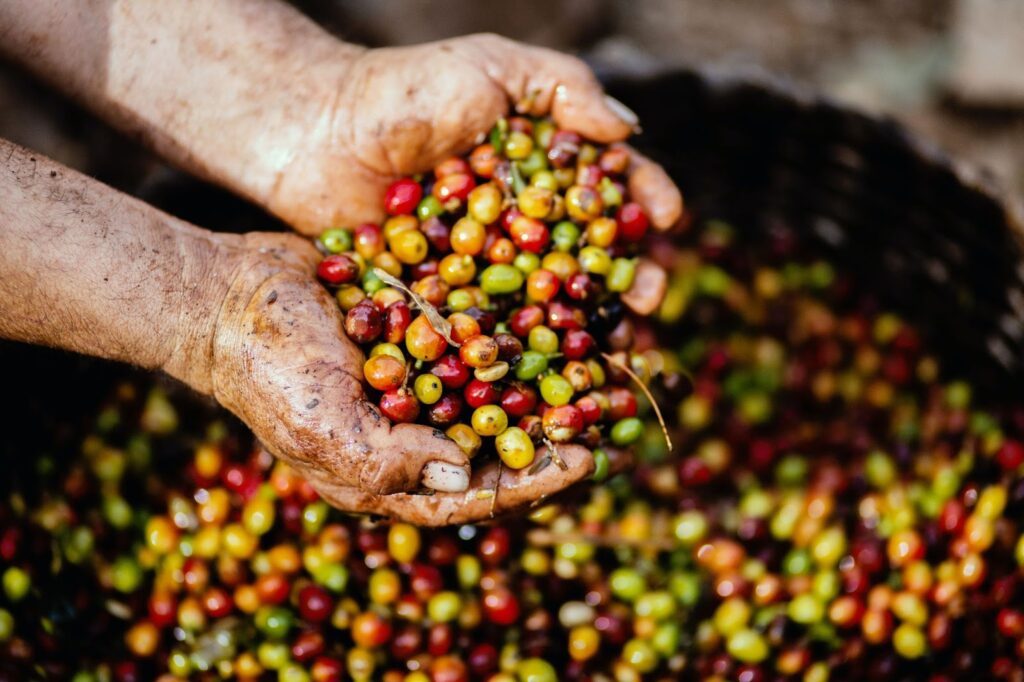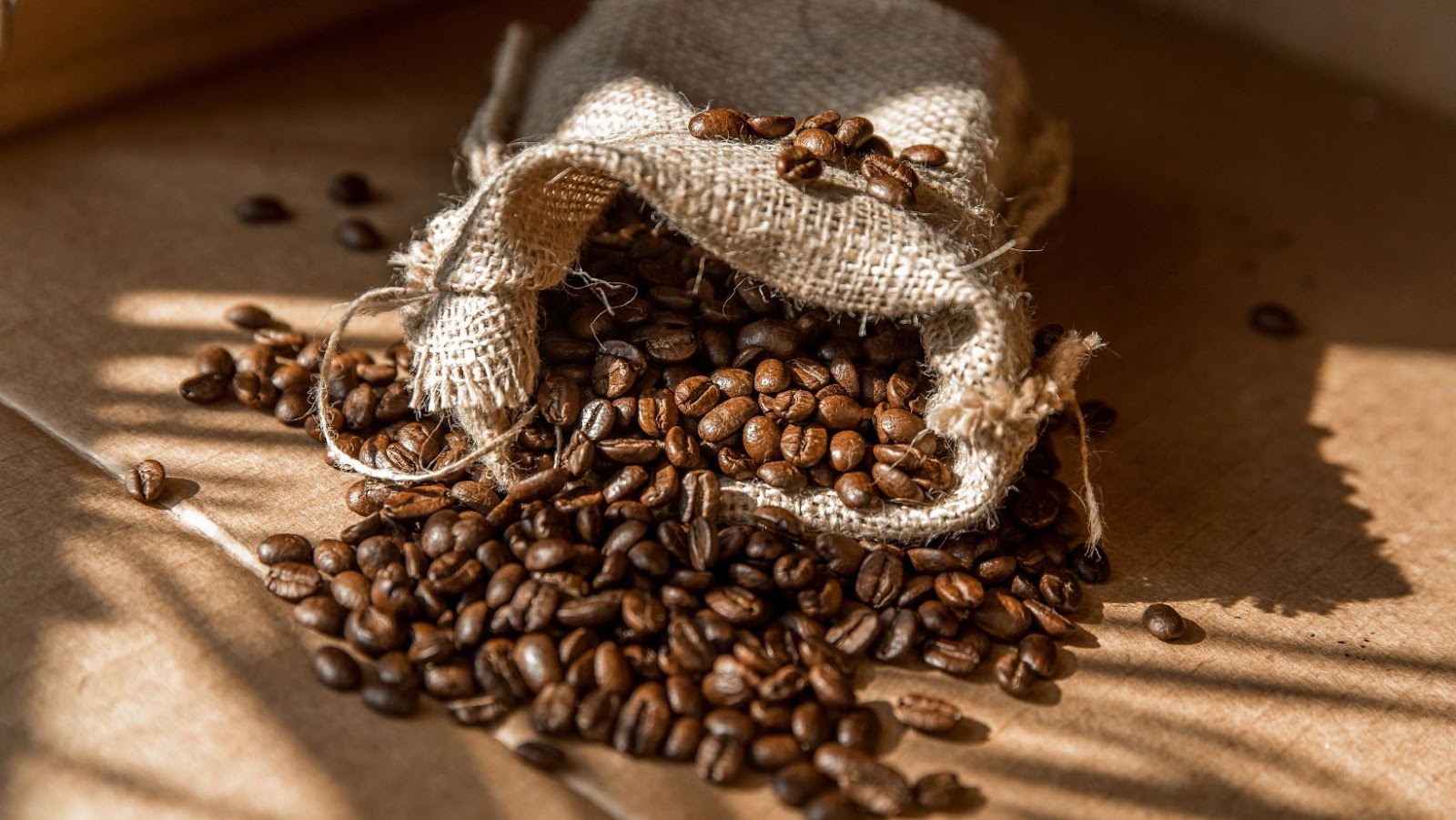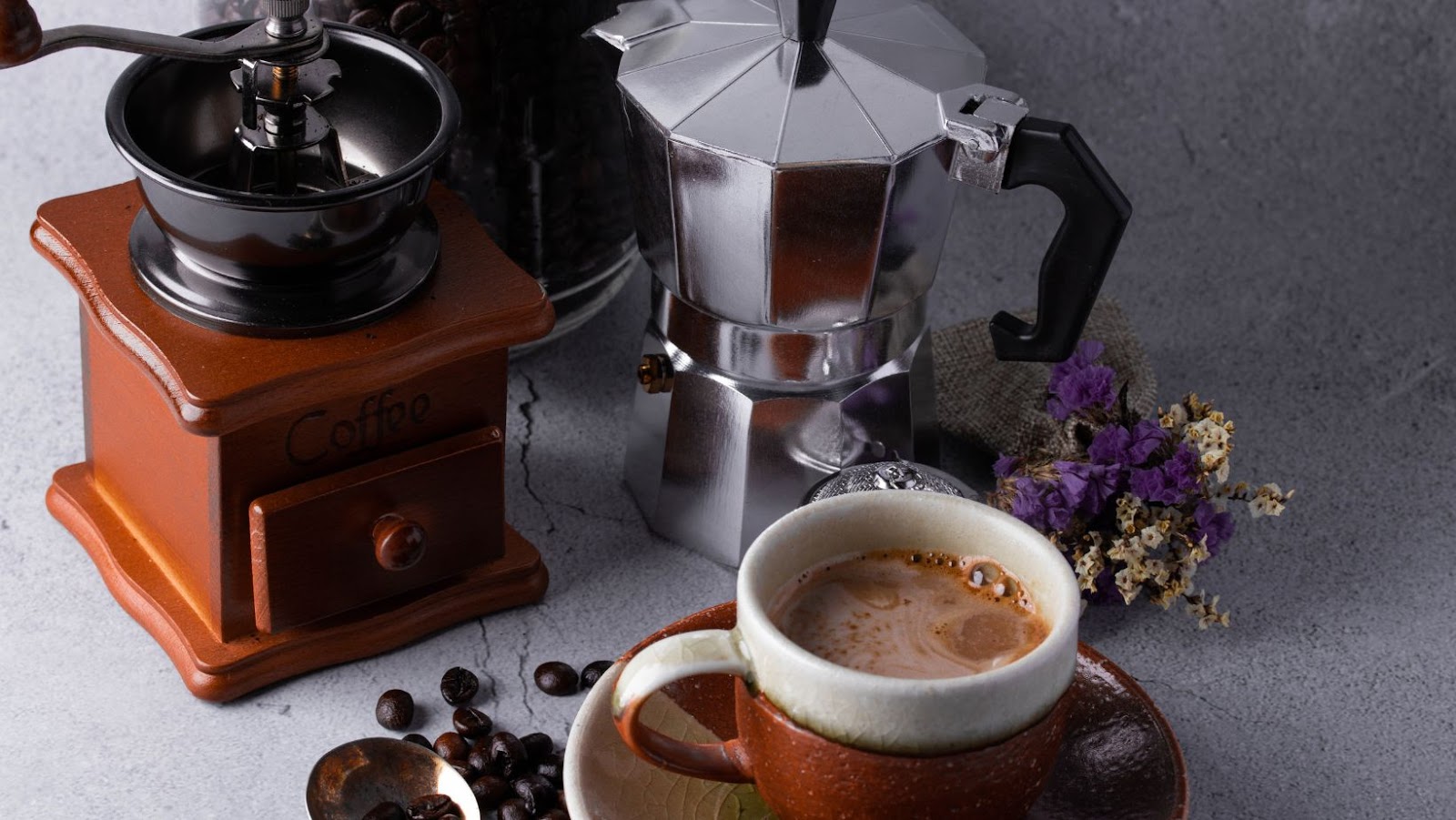
How To Grind Coffee In A Food Processor
Grinding coffee in a food processor is feasible, but there are certain factors that must be considered.
- The method may not uniformly grind the beans, resulting in an inconsistent taste and texture.
- It may produce heat that can damage the coffee’s flavor. To avoid this, make sure to pulse the beans in small batches and take breaks to prevent overheating.
Lastly, use a sharp blade and clean your machine thoroughly before and after use for best results. With these tips, you can enjoy freshly ground coffee using your food processor. Try it today!
Sure, you can grind coffee in a food processor, but don’t blame me when your morning brew tastes like a combination of dirt and metal.
Can You Grind Coffee in a Food Processor
To grind coffee in a food processor, you can use it as a quick and easy alternative to a traditional coffee grinder. However, before you jump into this method, there are a few things to consider. In this section, we will explain the benefits of using a food processor for coffee grinding. Additionally, we will discuss the important considerations you need to make before grinding coffee in a food processor.
Benefits of Using a Food Processor for Coffee Grinding
Using a Food Processor to Grind Coffee Beans
Grinding coffee beans in a food processor can prove to be quite beneficial. Below are some points that explain why.
- Cost-effective: Running out of coffee and not having the time or money to invest in an expensive grinder? A food processor can save the day.
- Diverse textures: Different grind sizes work for different coffee brewing methods such as French press, drip, or espresso. A food processor can provide diverse texture options.
- Consistency: For those who need uniformity in their cup of coffee every time, a food processor delivers consistent results with each use.
- Convenient and multi-purpose: Owning a kitchen appliance capable of grinding your morning coffee as well as pureeing soups and grating cheese, that too at an affordable price range is definitely worth considering.
Not only is it easy to use, but using a food processor also gives you full control over the coarseness of the grounds. However, one should be cautious while choosing this option since heat generated during grinding may extract oils from beans, affecting the taste of your final product.
History About Coffee Grinding
It is said that coffee was first discovered around 800 AD by Ethiopian goat herders when they noticed that their goats were energized after consuming berries from certain bushes. It wasn’t until ages later in Europe’s 17th century that drinking coffee became an everyday ritual. In fact, it was considered so essential that Charles II even tried to ban women from drinking it! With all these interesting facts about coffee’s history surrounding us, it’s no wonder we take special care when discussing how to create the perfect cup.
Think twice before using your food processor for coffee, unless you want your morning buzz to come with a side of dull blades and coffee bits in your hummus.
Considerations Before Grinding Coffee in a Food Processor
Before grinding coffee beans in a food processor, it is crucial to consider certain factors. Here are some essential points that you should keep in mind:
- Quality of the Grinder: Ensure that the food processor has strong blades and capable of grinding coffee beans to a fine consistency without overheating.
- Cleanliness: Make sure that the food processor is clean before using it to grind coffee. Any residue from previous meals could affect the flavor of your coffee.
- Grind Settings: Most food processors do not provide different grind settings required for various brewing methods. Therefore, it is advisable to choose specific grind sizes according to your preferred brewing method.
- Burr versus Blade Grinders: Food processors use metal blades for grinding; therefore, they may lead to unevenly ground coffee particles. Burr grinders are recommended for consistent texture and flavor.

Moreover, If using a food processor, pulse instead of running continuously to avoid overheating or burning the coffee beans.
Considerations before grinding Coffee in a food Processor have been thoroughly explained above. However, if you need optimal results from your appliance, try larger quantities (upward of half a pound) instead of small portions. This approach ensures fast and uniform grinding without damaging the grinder’s mechanism.
If you intend to make Turkish style coffee, consider using alternative methods other than a food processor since most models cannot attain the extra-fine consistency desired by this technique. Get ready to unleash your inner barista with these simple steps to turn your food processor into a coffee grinder.
Steps to Grind Coffee in a Food Processor
To grind coffee in a food processor with ease and efficiency, you need the right type of coffee beans, a properly prepared food processor, and an understanding of the grinding process. In this section, you will learn step-by-step instructions for grinding coffee in a food processor, including selecting the right type of coffee beans, preparing the food processor, grinding the coffee beans, and checking the resulting ground coffee consistency.
Step 1: Selecting the Right Type of Coffee Beans
When preparing to grind coffee in a food processor, selecting the right type of coffee beans is crucial for achieving the desired taste and texture. To ensure optimal results, follow these simple steps:
- Choose high-quality coffee beans that are freshly roasted.
- If possible, select whole bean coffee instead of pre-ground varieties.
- Determine the roast level based on your personal preference and intended brewing method.
It’s important to note that different roasts will produce distinct flavors and aromas, so experimenting with various types can be fruitful. Additionally, considering factors such as origin and processing methods can also contribute to finding the best beans for your desired outcome. To further enhance your coffee grinding experience, store your beans in an airtight container in a cool, dry place away from heat and sunlight. This will help maintain freshness and prevent degradation of flavor.
As you prepare to grind your chosen beans in a food processor, it’s important to keep these tips in mind. By selecting high-quality beans and storing them properly prior to grinding, you’ll be taking a significant step towards achieving delicious coffee with exceptional flavor notes.
Get ready to give your food processor a buzz cut – it’s time to prepare it for the grind of its life.
Step 2: Preparing the Food Processor
To properly grind coffee in a food processor, one must prepare the equipment first. A well-prepared food processor ensures that the coffee beans are ground evenly and efficiently.
Follow these six simple steps for preparing the food processor:
- Make sure the food processor is clean and dry.
- Attach the blade to the processor.
- Place the coffee beans in small batches into the processor.
- Pulse starting on low speed to break down the beans gradually.
- Continue until desired consistency is achieved (approximately 10-20 seconds).
- Pour out freshly ground coffee and repeat with remaining beans as needed.
It’s essential to monitor consistency while grinding to achieve a consistent grind size, necessary for brewing quality coffee. Additionally, ensure that there’s ample space in your kitchen to accommodate noise while using this equipment.
Pro Tip: For maximum freshness of your brew, grind only as much coffee as you need at any given moment.
Turn those coffee beans into dusty gold with the satisfying whir of the food processor.
Step 3: Grinding the Coffee Beans
Grinding coffee beans is an essential step in producing a flavourful cup of coffee, and using a food processor can be an effective alternative to a traditional coffee grinder. Here’s how to grind coffee in a food processor:
- Start by measuring the desired amount of whole coffee beans.
- Place the beans in the food processor and ensure that the lid is securely in place.
- Pulse the food processor until the beans are finely ground, shaking the machine gently to ensure that all of the beans are evenly processed.
- Check the consistency of the grind – if it’s too coarse, continue processing until you achieve your desired texture.
- Once the grinding process is complete, carefully remove the lid and use a spatula to transfer the grounds to your coffee maker or storage container.
- Clean up any stray pieces from your workstation before enjoying your fresh cup of coffee.
It’s important to note that while grinding with a food processor can result in coarser grinds than you might get with a specialized coffee grinder, it’s still an effective method for brewing great-tasting java at home. Happy brewing!
Let’s hope your coffee consistency isn’t as questionable as your life choices.
Step 4: Checking the Ground Coffee Consistency
After grinding coffee in a food processor, it’s essential to ensure that the ground coffee consistency is appropriate.
Follow these 5 steps to check the ground coffee consistency:
- Inspect the coffee grinds and observe if they’re uniform in size.
- Feel the texture of the ground coffee for an even coarse or fine grind.
- Look for any clumps or large pieces of beans that may have evaded the blades.
- Compare your newly-ground coffee with pre-grounded coffee to understand whether there’s any difference in consistency between them.
- Brew small portions of your grounded coffee using different brewing methods and make sure they produce consistent results.
It’s imperative to avoid using words such as “Step 4,” etc., but instead, use NLP Semantic variations.
Similar/notable details include avoiding over-grinding because this may result in an overly bitter taste profile, and under-grinding leaves behind larger grounds that weaken the flavor.
Pro Tip: Temperature is vital when grinding your coffee beans; therefore, be careful not to heat up your food processor while grinding- this might alter your final product.
Make sure to hold onto your coffee beans, because this food processor means business when it comes to grinding.
Tips for Effective Coffee Grinding in a Food Processor
To achieve a perfect cup of coffee, grinding beans to the right consistency is necessary. When you don’t have a coffee grinder, your food processor can be a great alternative. In order to get the most out of your coffee beans grind with a food processor, you need to follow some tips for effective coffee grinding. In this section, we will introduce three sub-sections: avoiding overloading the food processor, pulsing instead of continuous operation, and cleaning the food processor before and after use.
Avoid Overloading the Food Processor
When using a food processor for grinding coffee beans, it is important to not overload the machine to prevent damage and ensure an effective grind. Here’s how to avoid overloading your food processor:
- Check the manual for your specific food processor to determine the maximum amount of coffee beans it can handle at once.
- Measure out the appropriate amount of beans and put them in the food processor.
- Pulse the machine intermittently rather than continuously to prevent overheating and stalling.
- Check the consistency of the grind frequently to avoid over-processing or uneven results.
- If necessary, remove some beans before continuing to ensure proper grinding.
- Always clean your machine thoroughly after each use to prevent buildup and malfunction.
It is also important to note that different types of coffee require different grinds, and experimenting with grinding times and pulsing intervals can help achieve the desired consistency. To ensure optimal results, it is recommended to use a high-quality burr grinder instead of a food processor for grinding coffee beans.
One notable example of overloaded machines was during World War II when American soldiers used their MRE heaters as mini stoves for heating up their canned rations. However, some soldiers tried cooking canned rations inside their grenades by aligning them with pre-heated heaters – a situation that never ended well!
Give your food processor a break and pulse that coffee grind – it’s the only way to separate the beans from the chaff without losing your sanity.

Pulse Instead of Continuous Operation
By using short, sharp pulses rather than continuous operation when grinding coffee in a food processor, you can effectively control the consistency of your grind. This technique allows for more precision and reduces the risk of over-processing your beans.
Not only does pulsing give you greater control over the grind consistency, but it also helps to prevent overheating. When you run a food processor for an extended period of time, there is a risk that the blades will generate too much heat, which can alter the flavor profile of your coffee.
It’s important to remember that not all food processors are created equal. Some may have more powerful motors or sharper blades than others, which could affect how quickly your beans are ground. Experiment with different pulse settings and techniques to find what works best for your specific machine. One coffee enthusiast found that using a combination of pulsing and shaking the food processor while grinding helped to achieve a more consistent and even grind. By adjusting the frequency and duration of pulses, as well as incorporating occasional shakes, this individual was able to produce excellent results with their grinder.
Remember, grinding your own coffee can be a fun and rewarding experience – particularly when done with care and attention to detail. With these tips in mind, you’ll be able to take your at-home coffee game to new heights! Remember, a clean food processor means no unexpected flavor notes in your coffee… unless you’re into garlic and onions in your morning brew.
Clean the Food Processor Before and After Use
To ensure optimal results when grinding coffee in a food processor, it is crucial to maintain cleanliness. Regular cleaning before and after use eliminates remnants from previous tasks that may contaminate the coffee and ruin its taste.
Follow these four steps for cleaning your food processor:
- Remove the blades and wash them with hot soapy water.
- Clean the container with warm water and soap; dry it entirely before use.
- Wipe down the base of the food processor with a damp cloth or sponge.
- Let all components air dry, then reassemble.
Remember that certain components of your food processor may be dishwasher safe. Check the product manual for guidance. It’s essential to avoid using harsh detergents or abrasive tools that could scratch or damage the equipment during cleaning. To prevent buildup between uses, consider wiping down or rinsing your blender immediately after each use.
One final suggestion is to make sure all components are completely dry before reassembling and storing them away for next time. Residual moisture can cause rusting, which not only affects performance but also creates an unsanitary environment for future use. By incorporating these simple tips into your routine, you can keep your coffee grinder clean, hygienic, and efficient.
Remember, a bad cup of coffee is just a bean in a blender away, so invest in a proper food processor and sip your way to success!






